| |
VIC FLICK
James Bond Now
(VF)
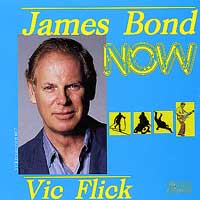 We
might be looking at those James Bond films a lot differently
had it not been for that ominous guitar riff of “The James Bond
Theme” as it was played by British guitar ace Vic Flick in Dr.
No in 1962. Vic Flick joined The John Barry Seven way
back in 1958, just in time to put his trademark guitar sound on Barry
classics like “Hit & Miss”, “Beat For Beatniks”
and a 1960 version of “Walk Don’t Run”. Flick’s
guitar riff on the Seven’s version of “The James Bond Theme”
inspired so many young British musicians to pick up the instrument themselves
and to this day Flick seems genuinely humbled by the respect that big
name U.K. guitarists still bestow on him. When Barry further developed
The John Barry Orchestra, Flick found success on his own as a
top flight session guitarist at the start of the fabled British pop
invasion of the ‘60s. After many years out of the spotlight,
Flick thankfully decided to return in 2002 with James Bond Now.
With Flick assisted by several fine players, the ten track CD is highlighted
by a rocking version of “The James Bond Theme” and a gripping
new take on Barry’s 1971 “Diamonds Are Forever”.
Still making music history as a recording guitarist, Vic was happy to
speak to MWE3.COM and 20th Century Guitar reviews editor Robert Silverstein
about his new album while also looking back on the golden years of the
‘60s. We
might be looking at those James Bond films a lot differently
had it not been for that ominous guitar riff of “The James Bond
Theme” as it was played by British guitar ace Vic Flick in Dr.
No in 1962. Vic Flick joined The John Barry Seven way
back in 1958, just in time to put his trademark guitar sound on Barry
classics like “Hit & Miss”, “Beat For Beatniks”
and a 1960 version of “Walk Don’t Run”. Flick’s
guitar riff on the Seven’s version of “The James Bond Theme”
inspired so many young British musicians to pick up the instrument themselves
and to this day Flick seems genuinely humbled by the respect that big
name U.K. guitarists still bestow on him. When Barry further developed
The John Barry Orchestra, Flick found success on his own as a
top flight session guitarist at the start of the fabled British pop
invasion of the ‘60s. After many years out of the spotlight,
Flick thankfully decided to return in 2002 with James Bond Now.
With Flick assisted by several fine players, the ten track CD is highlighted
by a rocking version of “The James Bond Theme” and a gripping
new take on Barry’s 1971 “Diamonds Are Forever”.
Still making music history as a recording guitarist, Vic was happy to
speak to MWE3.COM and 20th Century Guitar reviews editor Robert Silverstein
about his new album while also looking back on the golden years of the
‘60s.
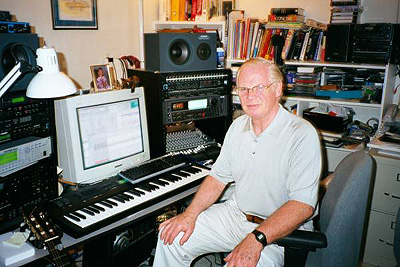 RS:
Hi Vic, it’s an honor to speak with you. I want to ask you about
your new solo CD James Bond Now. When and where was the new album
recorded? RS:
Hi Vic, it’s an honor to speak with you. I want to ask you about
your new solo CD James Bond Now. When and where was the new album
recorded?
VF: It's an honor to speak to you too, Robert. The album was recorded
in three places—Castle Oaks Studio in Topanga, my digital studio
in Santa Monica, and the studio of a good friend, Les Hurdle, in Reseda,
all in California. Les is a bass player and was heavily featured in
the disco era, mainly on Donna Summer records. I was lucky to have the
CD mastered by Mike Aarvold who has worked with artists of the caliber
of Julie Andrews, Rome, Manhattan Transfer, David Arkenstone and many
others. However good you might think your CD sounds, it takes on a whole
new life when mastered by someone like Mike.
RS: On James Bond Now, you also have a cool new instrumental
version of Paul McCartney’s “Live And Let Die” from the
James Bond movie of the same name. How did you rework those classic
Bond originals?
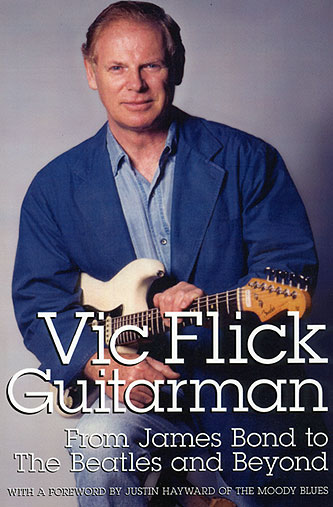 VF:
With all the Bond titles on the album, I wanted to keep the melodies
strong but give them my own, personalized and up to date treatment.
I took the melody line, hid in a closet for two days with earplugs in
and emerged with ideas for the arrangements. Many people had asked me
if I was going to record an album of Bond titles and after all these
years, as the Bond interest seemed to heighten, I started putting down
some tracks. The tunes I chose were very melodic and easy to arrange
and record, with the exception of the Bond Theme itself which is just
a repeated riff. I'm working on a follow up at this moment. It's starting
to lean toward a Latin feel. It's a music I have always loved to listen
to and play. It was difficult to get the big record companies interested
as they thought there was too much 'Bond' stuff out there already. So
I produced it myself and sell it from my Web Site, www.vicflick.com
and from Amazon.com. VF:
With all the Bond titles on the album, I wanted to keep the melodies
strong but give them my own, personalized and up to date treatment.
I took the melody line, hid in a closet for two days with earplugs in
and emerged with ideas for the arrangements. Many people had asked me
if I was going to record an album of Bond titles and after all these
years, as the Bond interest seemed to heighten, I started putting down
some tracks. The tunes I chose were very melodic and easy to arrange
and record, with the exception of the Bond Theme itself which is just
a repeated riff. I'm working on a follow up at this moment. It's starting
to lean toward a Latin feel. It's a music I have always loved to listen
to and play. It was difficult to get the big record companies interested
as they thought there was too much 'Bond' stuff out there already. So
I produced it myself and sell it from my Web Site, www.vicflick.com
and from Amazon.com.
RS: It’s amazing how influential the soundtracks John Barry made
for the ‘60s James Bond movies still are.
VF: I was talking with John Barry a couple of months ago and we are
both still amazed at the amount of interest there is in the Bond music
of that era. It is a kind of cult thing that shows no signs of diminishing.
RS: In addition to the music you made in the early ‘60s as guitarist
with The John Barry Seven on EMI you also played guitar for Barry on
his original Bond soundtracks including Goldfinger and From
Russia With Love. Any memories of your ‘60s soundtrack work
and working with George Martin on his ‘60s soundtrack albums?
VF: Those were exciting days in the recording studio. It was expected
that a lot of music was to be recorded so the standard of musicianship
of all the studio players was very, very high. The Goldfinger
score was an evocative one. I remember being pointed at by John Barry
and asked for a Gypsy Music solo, now! Same with the banjo solo under
the Kentucky horse sequence. With a large orchestra staring at you and
the clock on the wall ticking away the studio time, those moments can
be a bit stressful. I worked on many movies, notably the Bond ones,
but also The Pink Panther movies with Henry Mancini and that!
George Martin was a staff A&R man at EMI and I worked a lot with
him accompanying his contract artists. When The Beatles took him with
them, he became a bit up market but still used me. I was flattered that
he insisted I was featured on “Ringo's Theme” in the film
A Hard Day's Night and on the (soundtrack) album.
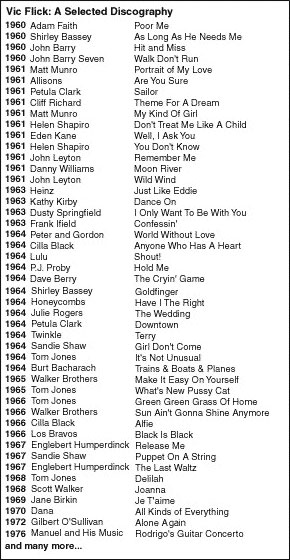 RS:
I heard that John Barry had only a few short days to record the original
James Bond theme back in 1962. How much did John Barry rework the song,
which is credited to Monty Norman, and did you know the song was going
to be so huge? RS:
I heard that John Barry had only a few short days to record the original
James Bond theme back in 1962. How much did John Barry rework the song,
which is credited to Monty Norman, and did you know the song was going
to be so huge?
VF: Barry did have just about a week to transform what were a few scribbled
notes on a piece of manuscript into the theme we all know. You are correct—the
song is credited to Monty Norman. Barry put a great deal of thought
into the arrangement and the orchestral line up. He asked for my thoughts
on the guitar sound and the result is history. At the time it was title
music for a film, we had no idea the tune would chase us down through
the years.
RS: One of the first songs you recorded as guitarist with The John Barry
Seven was a 1960 version of “Walk Don't Run”. Steve Hackett
mentioned that song as a big influence on his guitar playing.
VF: First of all, I'm very flattered that I had an influence on a player
of the status of Steve. Another nice moment was when Justin Hayward
of The Moody Blues walked across a Television studio to thank me for
starting him on the guitar. 'This lot wouldn't have been here without
you', he said. The John Barry Seven's version of “Walk Don't Run”
was a very hurried cover of The Ventures' record.
RS: Looking back on it all now, what was the U.K. music scene like back
in the pre-Beatles early ‘60s? There was a leap in musical progress
in England from sort of appreciating the late ‘50s guitar sounds
Duane Eddy (in the States) and of Bert Weedon in England to the early
‘60s English beat group sounds of The Shadows and John Barry Seven.
VF: All the ‘60s music scene was exciting and very busy. So much
was happening and the sounds were changing so fast. What FX pedal was
good today was out of fashion tomorrow. Fuzz Boxes by Gibson, Vox and
other makers were swamped by the high tech MXR pedals. Duane Eddy was
a big influence with his sound, but the guitar sort of evolved by itself
after Leo Fender got the shape and the electrics sorted out. The ‘60s
were a time of change and development and really defies chronicling.
Bert Weedon was a good player. His book, Play in a Day, is credited
with starting more guitar players than any other and has been a best
seller over the years. He's still going strong with his act. In it,
he runs up and down the first string while tremelo-ing like crazy saying
he's the fastest guitar in the West. Quite funny, really!
RS: Another Barry classic you played so effectively on was the 1960
track “Beat Girl”. I always thought that was a pretty amazing
song as well. Who do you think did the best cover of "The James
Bond Theme"?
VF: Beat Girl was a fun film and the main reason why John Barry
got asked to work on the Bond films. He was probably the first composer
to put that amount of beat, energy and upfront guitar into film music.
I am so happy I was along for the ride. I really don't know who has
done the best cover of “The James Bond Theme”. David Arnold
covered the title on his Shaken Not Stirred album and I'm still
waiting to hear the tune.
RS: How did you come to join The John Barry Seven and how did you guys
land a contract with EMI Records?
VF: I was touring with a Skiffle group on the same bill as Paul Anka
and the John Barry Seven. Shortly after the tour ended I got a call
from John asking me to join the group. He'd just lost a TV series because
the players he had couldn't read music to do some of the backings. He'd
been recording for EMI for a year or so without much success until the
TV show Drumbeat put him and the acts we were accompanying on
the map.
RS: There were some quite influential music producers at EMI in 1960.
The Shadows had Norrie Paramour as their producer and a couple years
later in 1962 The Beatles had George Martin. What was it like working
with JB7 producer Norman Newell?
VF: Norman Newell had a great sense of what was going to be a hit and
what artists were going to the top. He was always totally encouraging
and patient, which is more than can be said for a lot of A&R men.
Norman had an assistant, John Burgess, who really A&R’d the
John Barry sessions. Norrie was responsible for that British phenomenon,
Cliff Richard. A great and lasting talent.
RS: Were you friendly with Hank Marvin and The Shadows back then as
well? You also played with classical guitarist John Williams as well.
Do you keep in touch with Hank at all since he’s moved to Australia?
VF: Hank and my paths used to cross quite often at concerts and Motorway
Stops and at EMI. I was pleased to work with him and John Williams.
Both excellent guitarists in their field. I haven't been in touch with
Hank for years now, but am hoping to in connection with the book I'm
writing about the music scene in the ‘60s and ‘70s.
RS: I guess the Stringbeat album was the most popular studio
album from The John Barry Seven. Could you mention any other highlights
of your time with The John Barry Seven?
VF: The whole thing was a highlight with a non-stop work schedule, meeting
all the people you mention and many more. Being asked to do a Royal
Command Performance with the Seven was, of course, a highlight.
RS: I really want to ask about the session work you did.
VF: The session work at that time was extensive. Maybe a commercial
at 8 a.m., a country type session at 10.a.m., an orchestral recording
at 2.30.p.m. and finishing the day with some rock type session at 7
p.m. This kind of schedule went on day after day for many years, slowing
down around the mid seventies. Once tracking on and personal studios
came into being the whole scene changed.
RS: That was your 12 string on the Peter & Gordon hit “World
Without Love”. Were you somewhat of an on-call guitarist for EMI
Records in England back then?
VF: Kinda on call at EMI in as much as I worked for all the contractors
that were used by EMI. The Vox electric 12 string was given to me by
Jennings Music as a promo. It looked like a slightly bigger Strat and
had a diabolical action. Hank Marvin's signature is embossed on the
bridge cover. I still have it in a closet. Any offers?
RS: You played the lead guitar on Dave Berry’s hit “The Crying
Game”?
VF: I didn't play the solo, Big Jim Sullivan did. Jim and I still argue
over how he got the sound. He says it was his Wah Wah pedal, which he
didn't have at the time, and I say it was my DeArmond Volume and Tone
pedal, which I lent to him from my pedal bag. No matter, it was a great
record recorded in Decca Studio #2.
RS: You also played on the huge hit “Black Is Black” from
Los Bravos? What guitar were you using there?
VF: That was recorded in Decca #1 and I used a Fender Strat with a Fender
Reverbolux Amp.
RS: There were so many great pop songs coming out of England back them.
You also worked alongside Jimmy Page.
VF: I worked with Jimmy on a number of sessions. He was a great player
then and still is. There are so many pop songs.
RS: When did you leave England to move to L.A.?
VF: Started going to the States in 1974 when I worked on a cruise and
became a citizen in 1994.
RS: Have you been writing and composing over the years?
VF: I have composed the music tracks to many documentaries and composed
a lot of library music. It's good to do it when I want to do it.
RS: I know you still have the famous Clifford Essex Paragon Cello Bodied
F Hole guitar you made “The James Bond Theme” with as well.
Do you remember your first guitar and which guitars are you using these
days?
VF: My first guitar was a Gibson Kalamazoo, a small bodied round sound
hole acoustic of around 1950. I later foolishly traded it for a rotten
banjo! Then I moved up in the world to a Hofner President, all covered
in shiny mother of pearl and a lousy pick up. Then the Clifford Essex
and through a Fender Strat, Gibson ES175, Gibson L7c, Epiphone 12 String,
Levin Acoustic, a Martin D28, Yamaha gut string, Gibson Banjo and other
bits and pieces.
RS: Have you been keeping up with the pop scene these past years and
also do you keep in touch with John Barry these days?
VF: I try to keep up, but like the ‘60s, it's an ever changing
scene. Some of it is great, some of it not so great but all worth a
listen. As I said we spoke a couple of months ago and we try to keep
I touch every now and then. He's a nice person.
Recommended Listening:
John Barry - The Best Of The EMI Years
The Ultimate John Barry (both EMI England)
and Vic Flick - James Bond Now www.vicflick.com
Attention Artists and Record Companies: Have your CD reviewed in
mwe3.co. Send to P.O. Box 630249, Little Neck, N.Y. 11363-0249 e-mail:
info@mwe3.com
|
|
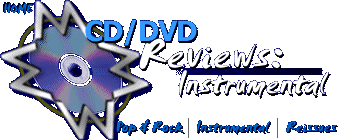








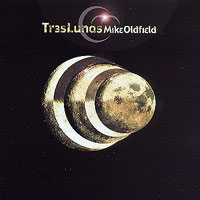 Fans
of U.K. progressive music icon Mike Oldfield will have to look all the
way to Spain to catch his latest masterpiece Tres Lunas where
it was released in mid 2002 on Warner Music Spain. It seems like
Spain—a hub of Oldfield interest and a country with a time-honored
guitar legacy—is the place Mike chose to release Tres Lunas.
Among the most intriguing and harmonious albums Oldfield has released
over the past 22 years, Tres Lunas—described as a ‘chill
out’ album and an ultra ambient musical excursion—was conceived
during Oldfield’s recent time on the resort of Ibiza. Since his
late 1973 breakthrough Tubular Bells, Mike has always been on
the cutting edge of rock and pop and the mostly instrumental, lush sounding
Tres Lunas is an excellent showcase for his high-tech guitar
approach and studio wizardry. The title track is an instrumental masterpiece
and represents Oldfield at his most inventive. The addition of several
female vocalists including sister Sally Oldfield, Amar and
Jude Sim—especially on the album’s single pick “To
Be Free”—makes Tres Lunas a rewarding CD for anyone
still digs early ‘80s Oldfield masterpieces like QE2 and
Five Miles Out.
Fans
of U.K. progressive music icon Mike Oldfield will have to look all the
way to Spain to catch his latest masterpiece Tres Lunas where
it was released in mid 2002 on Warner Music Spain. It seems like
Spain—a hub of Oldfield interest and a country with a time-honored
guitar legacy—is the place Mike chose to release Tres Lunas.
Among the most intriguing and harmonious albums Oldfield has released
over the past 22 years, Tres Lunas—described as a ‘chill
out’ album and an ultra ambient musical excursion—was conceived
during Oldfield’s recent time on the resort of Ibiza. Since his
late 1973 breakthrough Tubular Bells, Mike has always been on
the cutting edge of rock and pop and the mostly instrumental, lush sounding
Tres Lunas is an excellent showcase for his high-tech guitar
approach and studio wizardry. The title track is an instrumental masterpiece
and represents Oldfield at his most inventive. The addition of several
female vocalists including sister Sally Oldfield, Amar and
Jude Sim—especially on the album’s single pick “To
Be Free”—makes Tres Lunas a rewarding CD for anyone
still digs early ‘80s Oldfield masterpieces like QE2 and
Five Miles Out. 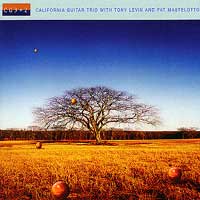 A
great sounding CD title for a recording that breaks new ground, CG3+2
unites the mighty California Guitar Trio with the one time King
Crimson rhythm section of Tony Levin (bass, stick) and Pat
Mastelotto (drums). The CGT are best known for their atmospheric
and minimalistic approach to improvised acoustic instrumental guitar
music and with the addition of the powerhouse team of Levin and Mastelotto,
CG3+2 really rocks. That enhanced musical punch comes into play
on the CD’s 7+ minute cover of the ‘71 Yes gem “Heart
Of The Sunrise”, which is given a faithful and innovative instrumental
reading here. Knocking out listeners since they formed at a Robert Fripp
guitar seminar in England back in ‘87—Bert Lams (guitar,
tenor guitar), Hideyo Moriya (guitar, mando-cello) and Paul
Richards (guitar, slide guitar)—scale new heights on the Fall
2002 release of CG3+2. CGT also have a Christmas CD coming from
the prodigious, Pittsburgh-based progressive rock label, Inside Out
Music America just in time for the 2002 X-mas holidays called 10
Christmas Songs—a disc previously only available on the
group’s web site.
A
great sounding CD title for a recording that breaks new ground, CG3+2
unites the mighty California Guitar Trio with the one time King
Crimson rhythm section of Tony Levin (bass, stick) and Pat
Mastelotto (drums). The CGT are best known for their atmospheric
and minimalistic approach to improvised acoustic instrumental guitar
music and with the addition of the powerhouse team of Levin and Mastelotto,
CG3+2 really rocks. That enhanced musical punch comes into play
on the CD’s 7+ minute cover of the ‘71 Yes gem “Heart
Of The Sunrise”, which is given a faithful and innovative instrumental
reading here. Knocking out listeners since they formed at a Robert Fripp
guitar seminar in England back in ‘87—Bert Lams (guitar,
tenor guitar), Hideyo Moriya (guitar, mando-cello) and Paul
Richards (guitar, slide guitar)—scale new heights on the Fall
2002 release of CG3+2. CGT also have a Christmas CD coming from
the prodigious, Pittsburgh-based progressive rock label, Inside Out
Music America just in time for the 2002 X-mas holidays called 10
Christmas Songs—a disc previously only available on the
group’s web site. 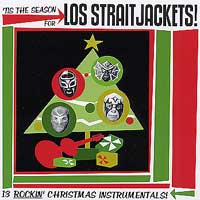 Who better to deliver the rocking Christmas spirit than veteran guitar
instro-rockers Los Straitjackets. Yuletide favorites like “Jingle
Bell Rock”, “Let It Snow”, “Sleigh Ride” and
“Feliz Navidad” really come alive in an instrumental surf-rock
setting. Ever the perfectionists, guitarists Danny Amis and Eddie
Angel are in peak form once again and the excellent rhythm section
of Pete Curry and drummer Jimmy Lester covers all the
bases with ease. There’s even several group originals to add the
the mix. Close your eyes for a minute and you can almost imagine it’s
1962 again with these holiday songs coming out of you little ‘60s
AM radio. Packed with one rocking X-mas song after another, the colorful
13 track ‘Tis The Season For Los Straitjackets is a musical
marvel.
Who better to deliver the rocking Christmas spirit than veteran guitar
instro-rockers Los Straitjackets. Yuletide favorites like “Jingle
Bell Rock”, “Let It Snow”, “Sleigh Ride” and
“Feliz Navidad” really come alive in an instrumental surf-rock
setting. Ever the perfectionists, guitarists Danny Amis and Eddie
Angel are in peak form once again and the excellent rhythm section
of Pete Curry and drummer Jimmy Lester covers all the
bases with ease. There’s even several group originals to add the
the mix. Close your eyes for a minute and you can almost imagine it’s
1962 again with these holiday songs coming out of you little ‘60s
AM radio. Packed with one rocking X-mas song after another, the colorful
13 track ‘Tis The Season For Los Straitjackets is a musical
marvel. 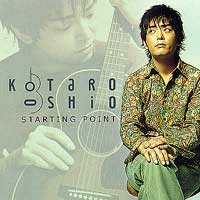 Japanese
guitar wiz Oshio jammed with B.B. King at the 2002 Montreaux Jazz Festival
and now everyone can hear what the crowds were raving about on his Narada
Records debut CD. A master of the acoustic guitar, the 34 year old Oshio
sounds influenced by favorites like Leo Kottke and Pat Metheny, yet
on Starting Point he arrives with a graceful, full-bodied fingerstyle
acoustic guitar sound that skillfully accents both melody and rhythm
in a most unique way. You can sometimes judge an artist by the music
he chooses to cover and on Starting Point Oshio tastefully revives
Ryuichi Sakamoto’s elegant “Merry Christmas, Mr. Lawrence”
and the ever popular “The Third Man Theme” by Anton Karas.
Decked out with cool album art and track by track liner notes by Oshio,
Starting Point is a fine introduction to an major new guitar
talent.
Japanese
guitar wiz Oshio jammed with B.B. King at the 2002 Montreaux Jazz Festival
and now everyone can hear what the crowds were raving about on his Narada
Records debut CD. A master of the acoustic guitar, the 34 year old Oshio
sounds influenced by favorites like Leo Kottke and Pat Metheny, yet
on Starting Point he arrives with a graceful, full-bodied fingerstyle
acoustic guitar sound that skillfully accents both melody and rhythm
in a most unique way. You can sometimes judge an artist by the music
he chooses to cover and on Starting Point Oshio tastefully revives
Ryuichi Sakamoto’s elegant “Merry Christmas, Mr. Lawrence”
and the ever popular “The Third Man Theme” by Anton Karas.
Decked out with cool album art and track by track liner notes by Oshio,
Starting Point is a fine introduction to an major new guitar
talent. 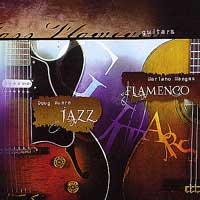 A
superb mix of well known pop and jazz standards played in a jazzy flamenco
style, this 2001 CD spotlights the accomplished guitar skills of New
York-based jazz guitarist Doug Munro. For Guitars Munro
is accompanied by one of the hottest new flamenco players from Spain,
Mariano Mangas and the result is a elegant fusion of Bossa Nova,
Rhumba, Swing and Bolero. In between some fine Munro and Mangas originals
are well-chosen covers of standards such as “Manha De Carnival”
and “Autumn Leaves” along with a pair of guitar duo medleys
that combine “Concerto De Aranjuez” with “Feelings”
and “16 Tons” with “The Pink Panther Theme”. A superbly
recorded, well planned duet CD that combines Munro’s gentle, provocative
electric guitar lines with Mariano’s charismatic Flamenco passion,
Guitars is an album made by guitar lovers for guitar lovers.
A
superb mix of well known pop and jazz standards played in a jazzy flamenco
style, this 2001 CD spotlights the accomplished guitar skills of New
York-based jazz guitarist Doug Munro. For Guitars Munro
is accompanied by one of the hottest new flamenco players from Spain,
Mariano Mangas and the result is a elegant fusion of Bossa Nova,
Rhumba, Swing and Bolero. In between some fine Munro and Mangas originals
are well-chosen covers of standards such as “Manha De Carnival”
and “Autumn Leaves” along with a pair of guitar duo medleys
that combine “Concerto De Aranjuez” with “Feelings”
and “16 Tons” with “The Pink Panther Theme”. A superbly
recorded, well planned duet CD that combines Munro’s gentle, provocative
electric guitar lines with Mariano’s charismatic Flamenco passion,
Guitars is an album made by guitar lovers for guitar lovers.
 We
might be looking at those James Bond films a lot differently
had it not been for that ominous guitar riff of “The James Bond
Theme” as it was played by British guitar ace Vic Flick in Dr.
No in 1962. Vic Flick joined The John Barry Seven way
back in 1958, just in time to put his trademark guitar sound on Barry
classics like “Hit & Miss”, “Beat For Beatniks”
and a 1960 version of “Walk Don’t Run”. Flick’s
guitar riff on the Seven’s version of “The James Bond Theme”
inspired so many young British musicians to pick up the instrument themselves
and to this day Flick seems genuinely humbled by the respect that big
name U.K. guitarists still bestow on him. When Barry further developed
The John Barry Orchestra, Flick found success on his own as a
top flight session guitarist at the start of the fabled British pop
invasion of the ‘60s. After many years out of the spotlight,
Flick thankfully decided to return in 2002 with James Bond Now.
With Flick assisted by several fine players, the ten track CD is highlighted
by a rocking version of “The James Bond Theme” and a gripping
new take on Barry’s 1971 “Diamonds Are Forever”.
Still making music history as a recording guitarist, Vic was happy to
speak to MWE3.COM and 20th Century Guitar reviews editor Robert Silverstein
about his new album while also looking back on the golden years of the
‘60s.
We
might be looking at those James Bond films a lot differently
had it not been for that ominous guitar riff of “The James Bond
Theme” as it was played by British guitar ace Vic Flick in Dr.
No in 1962. Vic Flick joined The John Barry Seven way
back in 1958, just in time to put his trademark guitar sound on Barry
classics like “Hit & Miss”, “Beat For Beatniks”
and a 1960 version of “Walk Don’t Run”. Flick’s
guitar riff on the Seven’s version of “The James Bond Theme”
inspired so many young British musicians to pick up the instrument themselves
and to this day Flick seems genuinely humbled by the respect that big
name U.K. guitarists still bestow on him. When Barry further developed
The John Barry Orchestra, Flick found success on his own as a
top flight session guitarist at the start of the fabled British pop
invasion of the ‘60s. After many years out of the spotlight,
Flick thankfully decided to return in 2002 with James Bond Now.
With Flick assisted by several fine players, the ten track CD is highlighted
by a rocking version of “The James Bond Theme” and a gripping
new take on Barry’s 1971 “Diamonds Are Forever”.
Still making music history as a recording guitarist, Vic was happy to
speak to MWE3.COM and 20th Century Guitar reviews editor Robert Silverstein
about his new album while also looking back on the golden years of the
‘60s. RS:
Hi Vic, it’s an honor to speak with you. I want to ask you about
your new solo CD James Bond Now. When and where was the new album
recorded?
RS:
Hi Vic, it’s an honor to speak with you. I want to ask you about
your new solo CD James Bond Now. When and where was the new album
recorded? VF:
With all the Bond titles on the album, I wanted to keep the melodies
strong but give them my own, personalized and up to date treatment.
I took the melody line, hid in a closet for two days with earplugs in
and emerged with ideas for the arrangements. Many people had asked me
if I was going to record an album of Bond titles and after all these
years, as the Bond interest seemed to heighten, I started putting down
some tracks. The tunes I chose were very melodic and easy to arrange
and record, with the exception of the Bond Theme itself which is just
a repeated riff. I'm working on a follow up at this moment. It's starting
to lean toward a Latin feel. It's a music I have always loved to listen
to and play. It was difficult to get the big record companies interested
as they thought there was too much 'Bond' stuff out there already. So
I produced it myself and sell it from my Web Site,
VF:
With all the Bond titles on the album, I wanted to keep the melodies
strong but give them my own, personalized and up to date treatment.
I took the melody line, hid in a closet for two days with earplugs in
and emerged with ideas for the arrangements. Many people had asked me
if I was going to record an album of Bond titles and after all these
years, as the Bond interest seemed to heighten, I started putting down
some tracks. The tunes I chose were very melodic and easy to arrange
and record, with the exception of the Bond Theme itself which is just
a repeated riff. I'm working on a follow up at this moment. It's starting
to lean toward a Latin feel. It's a music I have always loved to listen
to and play. It was difficult to get the big record companies interested
as they thought there was too much 'Bond' stuff out there already. So
I produced it myself and sell it from my Web Site,  RS:
I heard that John Barry had only a few short days to record the original
James Bond theme back in 1962. How much did John Barry rework the song,
which is credited to Monty Norman, and did you know the song was going
to be so huge?
RS:
I heard that John Barry had only a few short days to record the original
James Bond theme back in 1962. How much did John Barry rework the song,
which is credited to Monty Norman, and did you know the song was going
to be so huge?